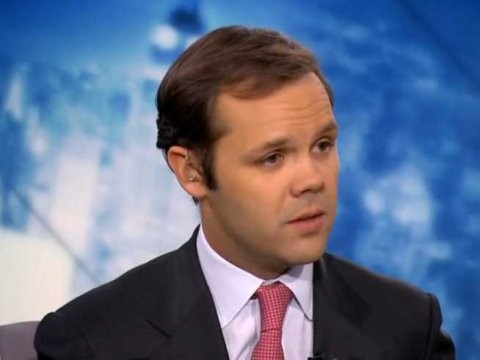Ride the Coattails of Activist Hedge Funds with Form 13D
Post on: 22 Сентябрь, 2015 No Comment

Research these Stocks on Kapitall’s Playground Now
Hedge fund performance in aggregate has returned a dismal 3.55% as of the end of June, versus the 13.24% return of the S&P 500 during the same period. As unenviable as these returns are, activist hedge funds have attracted a lot of attention this year, and with good reason. Not only are they making headlines for public disputes, but the market environment is back in a position where activists can find alpha-rich trades following the fallow years of the credit crisis.
JP Morgan published a primer on the return of activist hedge funds back in 2010 that outlined how the return of credit to the markets has combined with record levels of corporate cash and a desire for improved corporate governance in the absence of top line growth, providing a fertile environment for hedge fund activists. More recently, law firm Schulte Roth & Zabels 2012 Shareholder Activism Insight report found that [using] poor financial performance and the need for management or operational change as motivation hedge funds and other active investors are expected to add to the growth of shareholder activism, and 84% of the surveys respondents expect a significant rise in shareholder activism in the near future.
The rise of activist hedge fund activity means a steady stream of regulatory filings from these managers, providing an excellent source of alpha-rich trading ideas without the long lockups and heavy fees of investing directly in a hedge fund.
Following Hedge Funds
Hedge funds are by their very nature opaque. However, the various Securities and Exchange Commission (SEC) regulations that apply to hedge funds do compel managers to adhere to various reporting requirements. This includes the quarterly filing of Form 13F, containing the largest long equity holdings of funds over $100M, and Schedule 13D (known as Form 13D), which must be filed within 10 days of a manager taking an active stake representing more than 5% of outstanding shares in a public company.
Both types of filings have their limitations, and neither presents a perfectly clear picture of what exactly a hedge fund is really doing. For example, Form 13F does not show the short side of the managers book, nor the managers derivative positions. Similarly, activist managers frequently use tactics to avoid or delay filing Form 13D by establishing large positions in a target using options or derivatives, which skirt the 13D requirements. Despite these limitations, SEC filings can be incredibly useful tools for revealing which companies leading hedge funds are investing in.
The cover page of Form 13D states who is reporting the filing eligible event, what company it relates to, and the number of shares beneficially owned. Within Form 13D, the filer is required to describe seven key Items related to the transaction:
1) Security and Issuer (the target company and the type of shares involved in the transaction)
2) Identity and Background (who is reporting, and if multiple entities, describes the relationship between them)
3) Source and Amount of Funds or Other Consideration (where is the money for the transaction coming from; beware of signs of overleverage where majority of funding comes from debt)
4) Purpose of Transaction (key item; explains why the acquirer is taking a position- i.e. the shares are undervalued.)
5) Interest in Securities of the Issuer (how many shares were purchased in the target by parties listed in Item 2 above)
6) Contracts, Arrangements, Understandings or Relationships With Respect to Securities of the Issuer (Describes any agreements or relationships between parties in Item 2 and the target company)

7) Material to be Filed as Exhibits (may include letters to management)
When identifying filings investors will initially want to focus only on Form 13D filings, which represent new reportable positions in companies, and not the more plentiful Schedule 13D/A filings. Schedule 13D/A contains amendments to previously filed 13Ds, and while interesting (often including letters to management, or a change in the funds share holdings), they do not disclose new stakes.
Activist Tracking as a Trading Strategy
Hedge fund activist strategies are a particular form of event-driven investment, whereby fund managers invest in underperforming companies and attempt to create a catalyst for the stock price, often through shaking up management, or pressing for a sale. Read more about the activist strategy on the All About Hedge Funds blog.
While many activist hedge fund managers file Form 13F quarterly, it is their Form 13Ds that provide investors with the most valuable insights. Though the practice of tracking 13Fs has become increasingly popular spawning a few related ETFs (Global X Top Guru Holdings Index ETF [ GURU ], AlphaClone Alternative Alpha ETF [ ALFA ] ), there is currently only one mutual fund employing a 13D strategy, the 13D Activist Fund ( DDDAX ). According to the 13D Activist Funds Ken Squire. We invest in those companies that we believe to be the most compelling 13D filings of the most experienced activist investors who publicly take positions that their strategy and ideas are better than managements.
So, if you employ a similar strategy (not a bad idea DDDAX is up 24.32% YTD according to Bloomberg), you need to be able to analyze the activist [hedge fund], his track record, the sector, and the activists track record in that sector[as well as the] activist strategy that will be employed and the type of returns that strategy typically creates. All of that analysis sounds like a lot of work, but there are alternatives for the non-hedge fund specialist to gleam alpha-rich ideas from 13D filings.
Figure 1: Performance of a 13D tracking mutual fund














